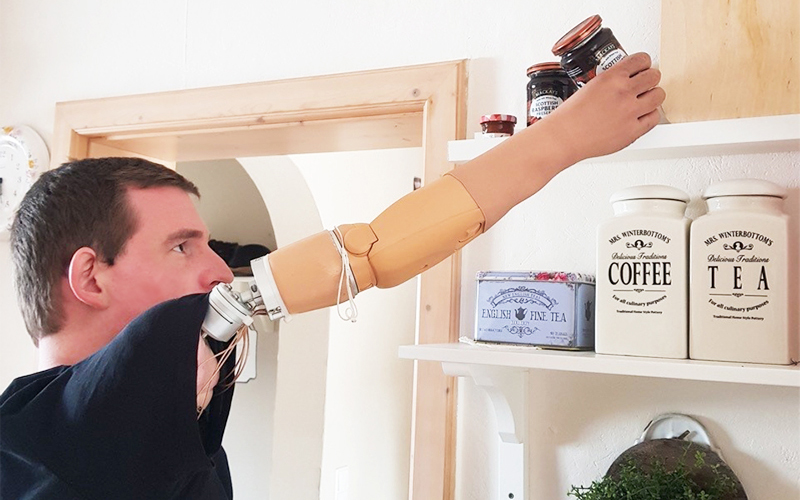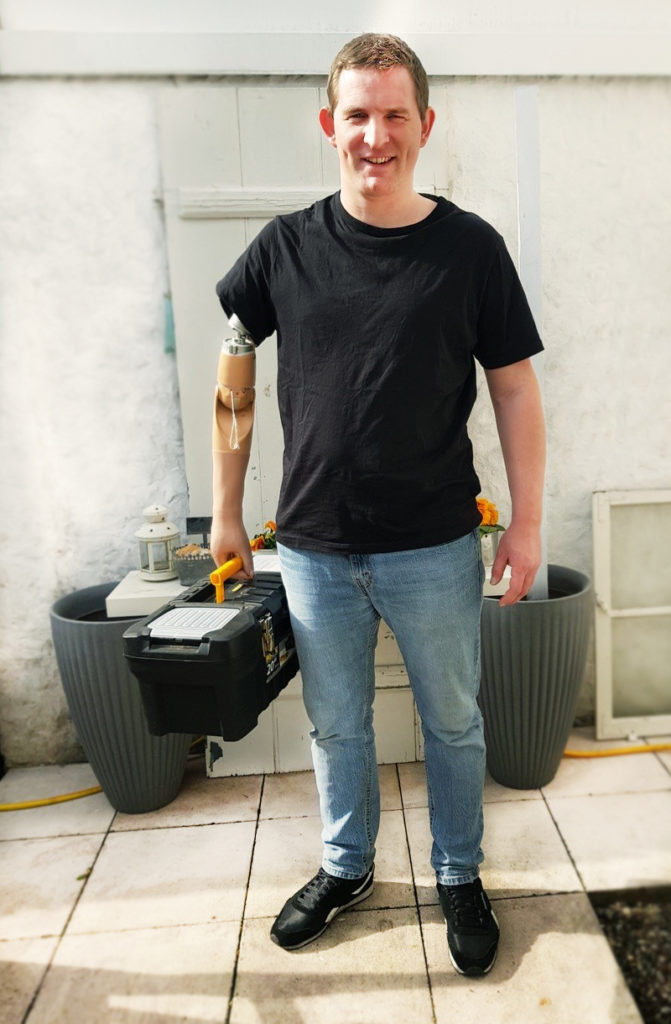
Life’s daily activities have become much easier
Meet 29-year-old engineer André who recently shared his story with Integrum. In 2011, while he was out with his friends, a fight broke out with another group, and he was pushed in front of an oncoming train. He landed between the tracks and his upper right arm was run over. Luckily, he survived, but his mangled arm needed to be amputated in an emergency surgical procedure.
He received his first socket prosthesis in the beginning of 2012, however, during his rehabilitation, there were legal struggles with the insurance company regarding repair costs, and often went for months without a prosthesis.
André has a relatively short arm stump, and he experienced discomfort due to his shoulder strap, as well as inconvenience due to the “dressing bag” he needed to put on for the vacuum-based prosthesis. Despite the vacuum when he perspired, the stump often slipped out of the prosthesis, which repeatedly needed to be pressed back on. He also experienced pain when trying to raise the prosthesis to shoulder height when the residual bone pressed against the socket and suffered muscle tension when wearing the prosthesis for longer periods. Despite these problems, he tried to wear the prosthesis as often as possible.
He was first made aware of osseointegration by prosthetist Michael Schäfer, CEO of Pohlig GmbH, and in 2019 he underwent treatment with the OPRA™ Implant System and TMR (Targeted Muscle Reinnervation); a surgical procedure which improves muscular control of the upper limb prosthesis. After several months of physiotherapy in which he trained the residual limb, trunk muscles, and the muscular control signals, he received an advanced myoelectric arm prosthesis.

More control and fluidity in movement
Today André wears his bone-anchored prosthesis all day every day, and no longer has issues with the discomfort of a shoulder strap or the prosthesis slipping off. He also feels much improved comfort, fluidity of moving his shoulder, and more control of his prosthesis; which makes life’s daily activities much easier.
When asked if he would recommend the treatment to other amputees, he replied that there were no disadvantages with osseointegration, and considering the advantages, would recommend it to those in good health and especially to those with a short stump. He did note that it requires a commitment as rehabilitation is time-consuming.
